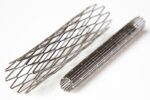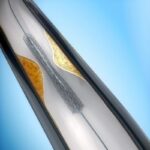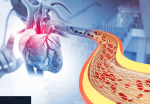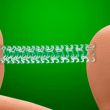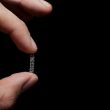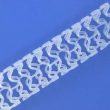Original title: Randomised study of a bioabsorbable polymer-coated sirolimus-eluting stent: results of the DESSOLVE II trial. Reference: Wijns W EuroIntervention 2015 Apr 22;10(12):1383-90. Multicenter, randomized study, which enrolled in 26 centers, a total of 184 patients 2:1 (bioabsorbable polymer-coated sirolimus-eluting stent, (SES) [n = 123] versus zotarolimus-eluting stent (ZES) [n = 61]). All patients were evaluated with quantitative...
Bioabsorbable stents also in peripheral territory
Original title: Evaluation of the Biodegradable Peripheral Igaki-Tamai Stent in the Treatmentof De Novo Lesions in the Superficial Femoral Artery. The GAIA Study. Reference: Martin Werner et al. J Am Coll Cardiol Intv 2014;7:305–12. The aim of this study was to assess the safety and efficacy of the biodegradable stent Igaki-Tamai (Igaki Medical Planning Company, Kyoto, Japan) in...
First results of bioabsorbable metal scaffolds DREAMS
Original title: Safety and performance of the drug-eluting absorbable metal scaffold (DREAMS) in patients with de-novo coronary lesions: 12 month results of the prospective, multicentre, first-in-man BIOSOLVE-I trial. Reference: Michael Haude et al. Lancet 2013; 381: 836–44. Bioabsorbable scaffolds could improve vasomotion, remodelling and facilitate new interventions, both percutaneous and surgical. This new bioabsorbable scaffold, different from the...
STREAM-2: Reduced Dosage of Tenecteplase for Patients over 60 Years Old
Reduced dosage of tenecteplase in elderly patients undergoing a pharmaco-invasive strategy. Delays in achieving timely reperfusion in patients with acute coronary syndrome with ST elevation (STEACS), whether through fibrinolysis or primary percutaneous coronary intervention (PCI), are associated with increased mortality. European guidelines establish a target reperfusion time of 120 minutes after the first medical contact...
Device Effectiveness for Femoropopliteal Artery Disease Treatment: Analysis of K-VIS ELLA Registry
Endovascular treatment of lesions in femoropopliteal territory (FPA) has become the main therapeutic option, seeing as it is less invasive and has faster recovery. It has used different devices, such as conventional bare metal stents (BMS), balloon angioplasty (POBA), and drug coated balloons (DCB), as well as drug eluting stents (DES). However, real world data...
The Current Role of Thrombus Aspiration in Primary PCI
In general, thrombus aspiration in acute myocardial infarction (AMI) has not been shown beneficial by large studies. It could even be prejudicial, since it has been associated with stroke. However, there are certain scenarios where the presence of a significant number of these prevents us from reaching adequate TIMI flow 3, or is associated with...
Should We Start Thinking Again About Bioresorbable Stents?
Coronary revascularization with drug-eluting stents (DES) is very frequent, especially in acute coronary syndromes, but these metallic stents are permanent foreign bodies that activate the entire inflammatory system. Using bioresorbable stents (BRS) emerged as an alternative to this challenge. Although the initial results of the ABSORB study were not as expected (probably due to a...
STEMI: Can We Omit Stenting?
The recommended treatment for ST elevation acute myocardial infarction (STEMI) is early PCI, typically stenting. However, stent implantation always involves the risk of intravascular complications, such as stent thrombosis or restenosis. Sometimes stable flow is restored to the target vessel after initial PCI and we can omit stenting when there is no angiographically significant residual...
EuroPCR 2021 | FUTURE II: Bioresorbable Scaffolds Reloaded
A new sirolimus-eluting bioresorbable scaffold with far thinner struts resulted non inferior to the Xience as to the end point of angiographic in-segment late loss (LL) powered for noninferiority testing. Even though this is a small study with angiographic end points, it might be the first step towards the return of bioresorbable scaffolds. Read also:...
Biodegradable Polymer Myth Also Debunked for ACSs
During TCT 2020 a preview of the results of the comparison of drug-eluting stents (DES) with biodegradable-polymer vs. durable-polymer in patients with acute coronary syndrome (ACS) was presented. The fine print and the final paper for HOST-REDUCE-POLYTECH-ACS are now published, and they lower the expectations set on biodegradable polymers. In patients with ACS undergoing angioplasty, biodegradable-polymer...
